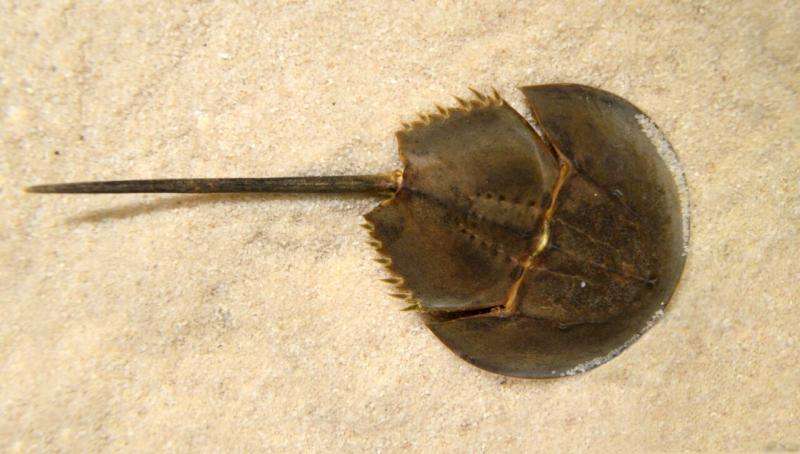Humans threaten Asian horseshoe crabs

Human activity is affecting the population of Asian horseshoe crabs in the state of Sabah in Malaysia, possibly by disrupting the male to female ratio – that is the conclusion of a study that surveyed two populations of Mangrove horseshoe crab (Carcinoscorpius rotundicauda) and studied their mating behaviour.
Human activity is affecting the population of Asian horseshoe crabs in the state of Sabah in Malaysia, possibly by disrupting the male to female ratio – that is the conclusion of a study that surveyed two populations of Mangrove horseshoe crab (Carcinoscorpius rotundicauda) and studied their mating behaviour.
Previous studies of horseshoe crabs in Malaysia have indicated that their population is in decline, but few studies have assessed the population in Sabah. The new study, conducted by researchers from the Universiti Malaysia Sabah and the Universiti Sains Malaysia, aimed to investigate the effects of human fishing on the populations of horseshoe crabs, and to learn more about the mating behaviour of these animals.
The researchers collected crabs from two sites: the first was a fishing site, and the second was a protected site. They compared the two populations by analysing the sizes of individuals and the sex ratio.
They found that the crabs from the two sites did not differ noticeably in their body size, although the females at both sites were larger than the males. However, the ratio of males to females did differ: at the protected site, males outnumbered females by 2.58 to 1, whereas at the fishing site, the ratio was closer to 5.5 males per female. The researchers speculate that the lower proportion of females at the fishing site could result from females being caught in fishing nets; their larger bodies make them more susceptible than males.
The team also studied the mating behaviour of the crabs by monitoring small populations in three tanks in which the male to female sex ratios were different: 1:1, 2:1 and 4:1, respectively. Over 30 days, the most successful mating events occurred in the tank in which the number of males and females was equal. Mating success for females was also dependent on body size: the largest females mated more frequently.
The observations indicate that disruption of the sex ratio at the fishing site could affect the future of the horseshoe crab population. With fewer females, fewer successful mating events are likely, threatening a decline in the population. The authors conclude that studies of more populations in the region will build on their work and determine the appropriate measures to conserve horseshoe crab populations.
Provided by Universiti Putra Malaysia (UPM)


















